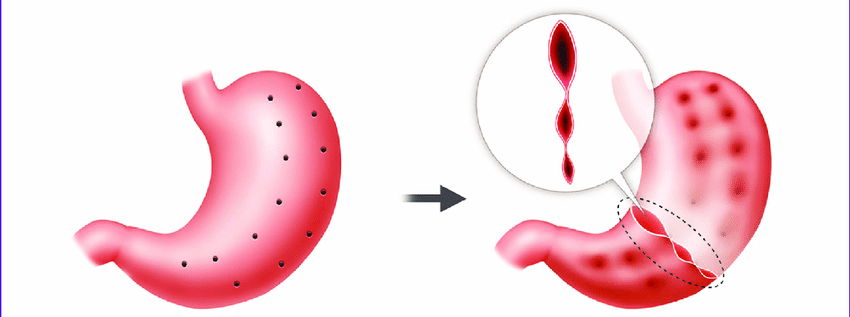ENOSCOPIC SLEEVE GASTROPLASTY
Endoscopic Sleeve Gastroplasty (ESG)
An Endoscopic Sleeve Gastroplasty is a procedure which reduces the capacity of the patient's stomach. By reducing the volume of the stomach, patients will become fuller faster and have a reduced calorie intake. Accompanied with proper diet and exercise, patients who undergo an Endoscopic Sleeve Gastroplasty can expect to accelerate their weight-loss therapy.
Endoscopic Sleeve Gastroplasty (ESG)
Dr. Michel Kahaleh practices a specialized technique of gastric volume reduction. While other similar procedures will remove large sections of stomach tissue, the Endoscopic Sleeve Gastroplasty performed by Dr. Michel Kahaleh is carried out by folding the stomach into itself and stitching the stomach into a tube shape. Effectively reducing the stomach capacity by 70%.
Using minimally invasive endoscopic techniques, Dr. Michel Kahaleh is able to safely and securely perform the procedure without opening the torso. Attached to the endoscope is a suturing device and camera to carry out the procedure. During the operation, the patient is put under anesthesia. Most patients will return home the same day as the operation after a short observation period.
The Endoscopic Sleeve Gastroplasty is a preferred bariatric therapy tool, as patients are able to achieve their weight-loss goals with their own efforts. With the help of a team comprised of gastroenterologists, nutritionists, endocrinologists, psychiatrists, and exercise therapists, the patient will be guided on how to properly lose their weight after completing an Endoscopic Sleeve Gastroplasty.
How is the Endoscopic Sleeve Gastroplasty Performed?
Once under anesthesia, an initial endoscopic examination is conducted on the gastrointestinal tract. The endoscope enters through the patient's mouth, travels through the esophagus and into the stomach. Attached to the endoscope is a camera. This diagnostic tool allows Dr. Michel Kahaleh to make assessments on the gastrointestinal tract in a minimally invasive manner.
After the examination is cleared, a special suturing device is attached to the endoscope and is passed into the stomach. Which is then used by Dr. Michel Kahaleh to reform the stomach into a tube-shape. This is done by using a set of full thickness sutures to stitch the gastric wall into itself, from the antrum to the fundus.
The entire procedure takes anywhere between 90 to 120 minutes. Allowing the patient to return home on the same day after a short period of observation.
Do I Qualify for a Endoscopic Sleeve Gastroplasty?
The ideal candidate for an Endoscopic Sleeve Gastroplasty will exhibit the following:
- A body mass index (BMI) between 30 to 40. Patients with BMIs lower or higher can be considered, with a consultation by Dr. Michel Kahaleh
- A willingness to be observed and interviews in a medically supervised program
- Previously tried to lose weight through exercise and diet without any success
- Patients who are not candidates for bariatric surgery, or do not wish to undergo bariatric surgery
Post-Surgical Bariatric Treatments
After completing the Endoscopic Sleeve Gastroplasty, patients will have to allow their stomach and body adjust to the procedure. Directly following the procedure, patients may not drink or eat for a period of at least 8 hours. The two weeks following the 8 hour fast, patients move onto a liquid diet. After those two weeks, patients will slowly move to small semi-solid meals for a period of four weeks.
During this time, patients will continue to follow-up with their team of nutritionists, gastroenterologists, endocrinologists, psychiatrists, and exercise therapists. So that the team may monitor how the body is adjusting to the procedure and craft the specific dietary plan that is special to that patient.
Sleeve gastrectomy. The stomach is transected vertically creating a gastric tube and leaving a pouch of 100 to 200 mL. The included figures are the property of Johnson and Johnson and Ethicon Endo-Surgery (Europe). They are reproduced here with their kind permission.
Bariatric surgery: The challenges with candidate selection, individualizing treatment and clinical outcomes - Scientific Figure on ResearchGate. Available from: https://www.researchgate.net/figure/SG-Sleeve-gastrectomy-The-stomach-is-transected-vertically-creating-a-gastric-tube-and_fig3_234097879 [accessed 31 Mar, 2020]
How Much Weight Can I Expect to Lose?
The most important aspect of this procedure is that it is intended to be done in tandem with specialized diet and exercise. This is why a team of nutritionists, psychiatrists, gastroenterologists, endocrinologists, and exercise therapists will assist the patient in their weight-loss therapy.
On average, patients can expect to lose anywhere between 40 to 70lbs, and as much as 20% of their body weight. In recent studies, data has shown that patients can continue to benefit with accelerated weight-loss for a period of 2 years. Following that, weight-management is made much easier with the reduced calorie intake.
Data has also shown the tremendous effectiveness of Endoscopic Sleeve Gastroplasty in improving obesity related medical problems such as cholesterol, diabetes and high blood pressure. Just like any other bariatric procedures, Endoscopic Sleeve Gastroplasty requires a dedicated life-style change. Which includes a commitment to a healthier lifestyle and permanent changes to one diet and exercise to guarantee life long success with an Endoscopic Sleeve Gastroplasty.
What are the Risks of Endoscopic Sleeve Gastroplasty?
Historically, the Endoscopic Sleeve Gastroplasty procedure has been exceptionally safe and reliable. Developments and continued practice has significantly decreased the hospital recovery time. When compared to traditional laparoscopic sleeve gastrectomy, an Endoscopic Sleeve Gastroplasty has notably less chances for complications and a shorter recovery time.
Since an Endoscopic Sleeve Gastroplasty requires no surgery, the expected side-effects will only last a couple of days. Side-effects such as pain and nausea can be expected, both of which are manageable by medication. Most patients will recover from these side effects in less than 3 days. Cases of complications are very rare.
Patients who have gastrointestinal bleeding, a hiatal hernia larger than 3 centimeters or prior stomach surgery are not candidates for Endoscopic Sleeve Gastroplasty, as those conditions can lead to complications for the procedure.
Who is Not a Candidate for Endoscopic Sleeve Gastroplasty?
Some patients may not be considered a candidate for the procedure if they exhibit any of the following:
- Unwillingness to participate in a medically-supervised diet and behavior modification program
- Alcohol or drug addictions
- Variceal disease
- Active ulcers in the stomach or small intestine
- Inflammatory diseases of the gastrointestinal tract
- Daily prescribed treatment with aspirin, anti-inflammatory agents, anticoagulants or other gastric irritants
- Large hiatal hernia
- Pregnant or breast-feeding
- Heartburn symptoms despite taking heartburn medications
- Previous gastric surgery
- Prior open or laparoscopic bariatric surgery
LOCATION
Robert Wood Johnson University Hospital
1 RWJ Place, MEB 491C
New Brunswick, NJ 08901
CLINIC HOURS
- Mon - Fri
- -
- Sat - Sun
- Closed
© 2024
Michel Kahaleh Gastroenterologist | All rights reserved



